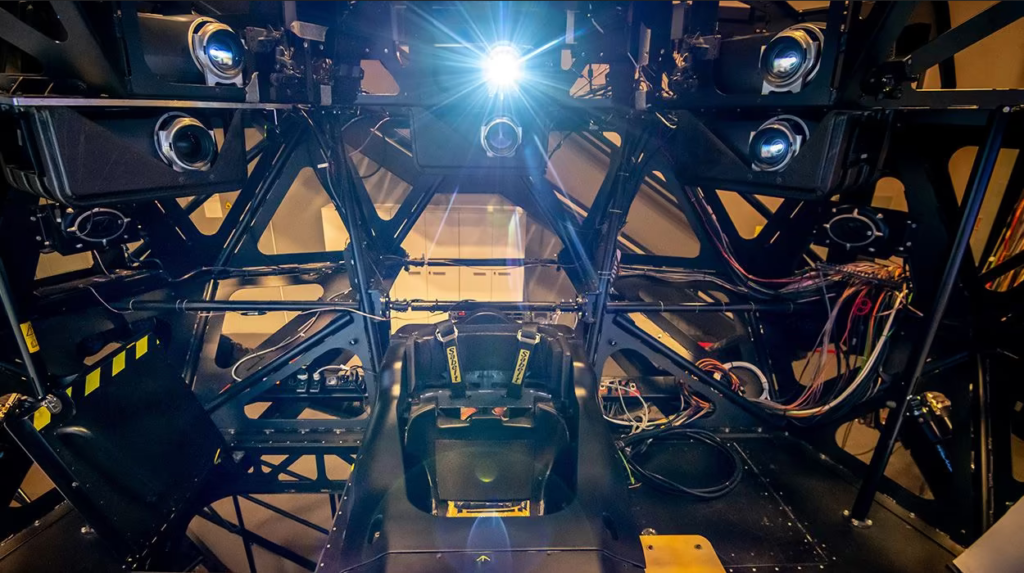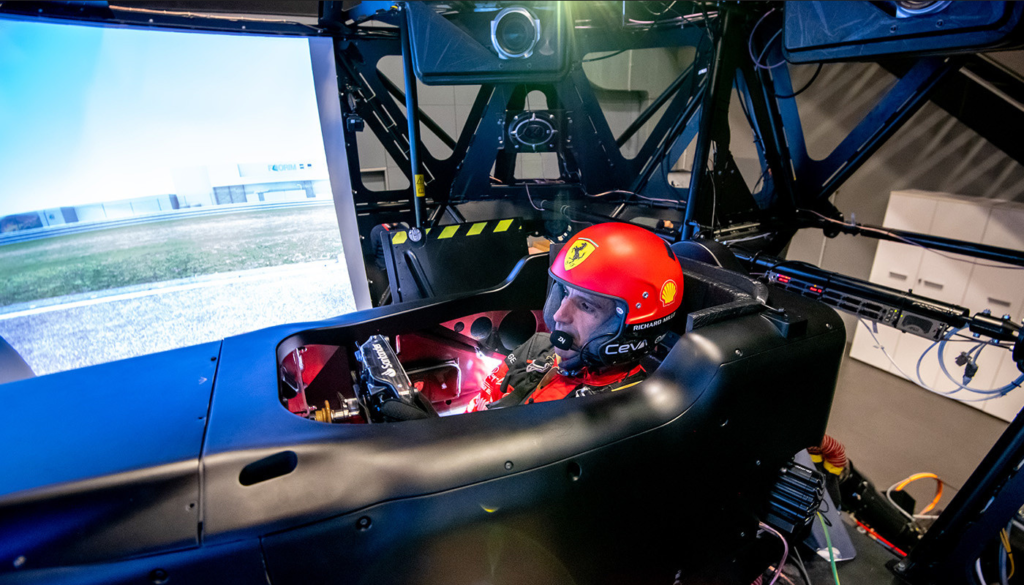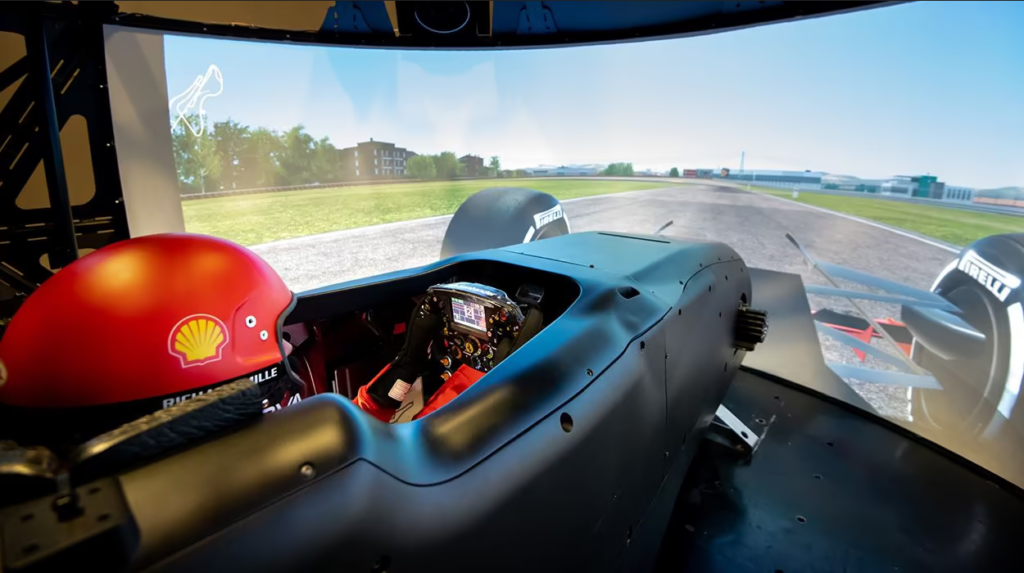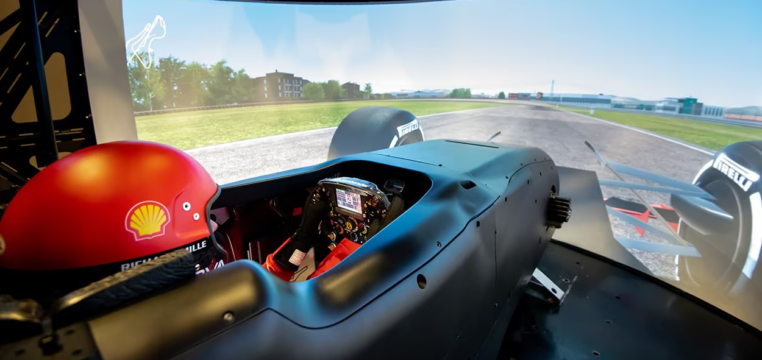The Evolution of Ferrari’s Simulator Technology
A crucial part of Ferrari’s tech arsenal, the simulator has played a pivotal role for the F1 team over the past two decades. Its importance skyrocketed when in-season testing was banned by the FIA in 2009.
The Virtual Realm: A Crucial Realm for F1 Development
With the implementation of a tightly monitored cost cap, the virtual world has become the primary domain for evolving new F1 cars. Scuderia Ferrari recently introduced an all-new simulator that boasts an astonishing 98% accuracy in correlation and validation with the real world. Nevertheless, the previous system remains far from obsolete.

A Versatile Asset for Ferrari’s Motorsport Ecosystem
According to Filippo Petrucci, the head of Head of F1 Clienti, XX Programme, and Corso Pilota workshop, the former simulator, used until 2022 by all drivers, will now serve Ferrari customer racing teams and the LMH program. Additionally, Ferrari aims to offer Corse Clienti customers the opportunity to experience the modern V6 hybrid turbo, particularly for those familiar with the older V8, V10, and V12 machines.
Unleashing the Benefits: The Power of Ferrari’s Simulator
The advantages for the race team are well-documented. With the simulator, substantial car changes can be made at minimal costs. Modifications to the car’s configuration, such as altering the wheelbase length, which would be nearly impossible in the real world, become feasible. The simulator also plays a crucial role in setup preparation, especially when the team is gearing up for a race at a new circuit. Test drivers can collaborate with the race team in real-time, regardless of their location worldwide.

Unveiling the Customer Experience: Tailored Simulations for Success
The simulator is in high demand, with only approximately 15 days per year available for customers. Each day begins with a training session, outlining the differences between traditional F1 cars and the latest hybrid versions. This includes deciphering the complexities of energy recuperation, DRS (Drag Reduction System), and the advanced steering wheel features. Customers can then choose two circuits to simulate, with a suggested representative circuit in the morning, such as Barcelona, known for its fast, high-downforce corners. Throughout the day, a coach provides real-time monitoring and guidance via a communication link, while two engineers analyze telemetry data in the control room, mirroring the resources available to the F1 team.
Replicating Reality: The Immersive Simulator Experience
The feedback provided by Ferrari’s simulator closely emulates the sensations felt by drivers on a real circuit. Every variable can be controlled, from the composition of the asphalt to tire degradation. The simulator’s continuous evolution encompasses graphics, detailed feedback to the driver, pedal feel, vibrations, and more. While contemporary F1 cars may be larger and heavier, they offer increased grip, both mechanical and aerodynamic, as well as significantly more downforce. Comparing the experience of driving a 2017-spec car to the latest models reveals an immediate and evident difference to the driver.

Engineering Excellence: Minimizing Latency and Maximizing Performance
Simulator designers and engineers prioritize minimizing latency, reducing the gap between simulation and real-world racing conditions. Ferrari’s latest simulator achieves a latency of less than four milliseconds, ensuring faster driver response to dynamic phenomena such as under or oversteer. The system’s bandwidth exceeds 55Hz across six degrees of freedom (DOF), accurately processing and conveying information to the driver and their vestibular system. Filippo Petrucci suggests that the younger generation of drivers, raised in the era of sophisticated computer games, adapt more quickly to the simulator’s challenges. Ultimately, the simulator instills confidence in drivers, offering an ultra-realistic and completely safe environment with expert guidance to continuously improve lap times.
Unleashing Potential: Transformative Gains on the Track
The impact of Ferrari’s simulator on driver performance is truly remarkable. With improvements ranging from six to seven seconds in lap times being the norm, there have even been cases where clients achieved an astounding 20-second improvement around Barcelona. The simulator stands as an exceptionally effective tool, combining performance enhancement with a thrilling experience.
Watch an exclusive video where Marc Gené explores the simulator at Maranello

